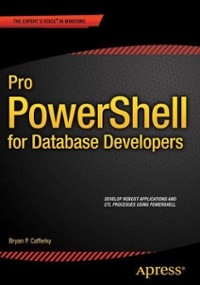Answered step by step
Verified Expert Solution
Question
1 Approved Answer
from __future__ import annotations from typing import Any, List, Optional class Tree: A recursive tree data structure. Note the relationship between this class and RecursiveList;
from __future__ import annotations from typing import Any, List, Optional class Tree: """A recursive tree data structure. Note the relationship between this class and RecursiveList; the only major difference is that _rest has been replaced by _subtrees to handle multiple recursive sub-parts. """ # === Private Attributes === # The item stored at this tree's root, or None if the tree is empty. _root: Optional[Any] # The list of all subtrees of this tree. _subtrees: List[Tree] # === Representation Invariants === # - If self._root is None then self._subtrees is an empty list. # This setting of attributes represents an empty Tree. # # Note: self._subtrees may be empty when self._root is not None. # This setting of attributes represents a tree consisting of just one # node. def __init__(self, root: Any, subtrees: List[Tree]) -> None: """Initialize a new Tree with the given root value and subtrees. If is None, the tree is empty. Precondition: if is None, thenis empty. """ self._root = root self._subtrees = subtrees def is_empty(self) -> bool: """Return True if this tree is empty. >>> t1 = Tree(None, []) >>> t1.is_empty() True >>> t2 = Tree(3, []) >>> t2.is_empty() False """ return self._root is None def __len__(self) -> int: """Return the number of items contained in this tree. >>> t1 = Tree(None, []) >>> len(t1) 0 >>> t2 = Tree(3, [Tree(4, []), Tree(1, [])]) >>> len(t2) 3 """ if self.is_empty(): return 0 else: size = 1 # count the root for subtree in self._subtrees: size += subtree.__len__() # could also do len(subtree) here return size # TODO: implement this method! def num_positives(self) -> int: """Return the number of positive integers in this tree. Precondition: all items in this tree are integers. Remember, 0 is *not* positive. >>> t1 = Tree(17, []) >>> t1.num_positives() 1 >>> t2 = Tree(-10, []) >>> t2.num_positives() 0 >>> t3 = Tree(1, [Tree(-2, []), Tree(10, []), Tree(-30, [])]) >>> t3.num_positives() 2 """ # if self.is_empty(): # ... # elif self._subtrees == []: # ... # else: # ... # for subtree in self._subtrees: # ... subtree.num_positives() ... # ... pass # TODO: implement this method! def maximum(self: Tree) -> int: """Return the maximum item stored in this tree. Return 0 if this tree is empty. Precondition: all values in this tree are positive integers. >>> t1 = Tree(17, []) >>> t1.maximum() 17 >>> t3 = Tree(1, [Tree(-2, []), Tree(10, []), Tree(-30, [])]) >>> t3.maximum() 10 """ # if self.is_empty(): # ... # elif self._subtrees == []: # ... # else: # ... # for subtree in self._subtrees: # ... subtree.maximum() ... # ... pass # TODO: implement this method! def height(self: Tree) -> int: """Return the height of this tree. Please refer to the prep readings for the definition of tree height. >>> t1 = Tree(17, []) >>> t1.height() 1 >>> t2 = Tree(1, [Tree(-2, []), Tree(10, []), Tree(-30, [])]) >>> t2.height() 2 """ # if self.is_empty(): # ... # elif self._subtrees == []: # ... # else: # ... # for subtree in self._subtrees: # ... subtree.height() ... # ... pass # TODO: implement this method! def __contains__(self, item: Any) -> bool: """Return whether this tree contains - . >>> t = Tree(1, [Tree(-2, []), Tree(10, []), Tree(-30, [])]) >>> t.__contains__(-30) # Could also write -30 in t. True >>> t.__contains__(148) False """ # if self.is_empty(): # ... # elif self._subtrees == []: # ... # else: # ... # for subtree in self._subtrees: # ... subtree.__contains__(...) ... # ... pass if __name__ == '__main__': import doctest doctest.testmod() import python_ta python_ta.check_all()
Step by Step Solution
There are 3 Steps involved in it
Step: 1

Get Instant Access to Expert-Tailored Solutions
See step-by-step solutions with expert insights and AI powered tools for academic success
Step: 2

Step: 3

Ace Your Homework with AI
Get the answers you need in no time with our AI-driven, step-by-step assistance
Get Started


